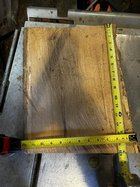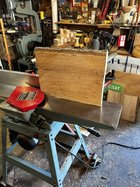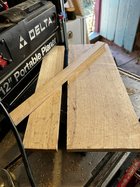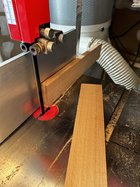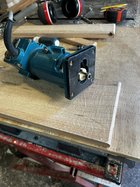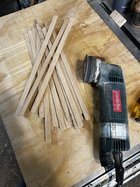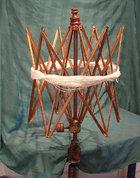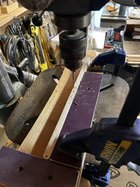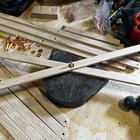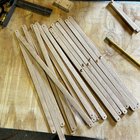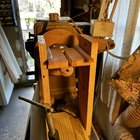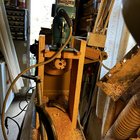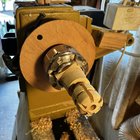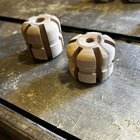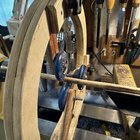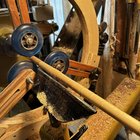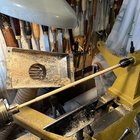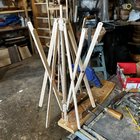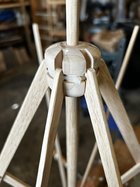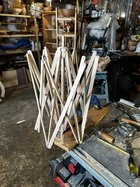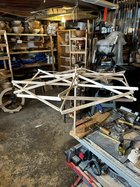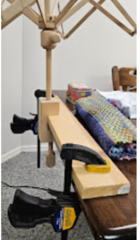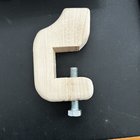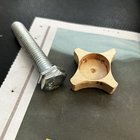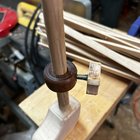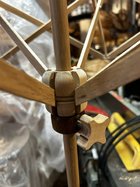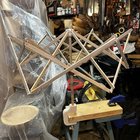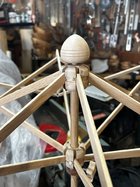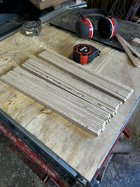
 This thread will document the process of making an umbrella swift which fiber artists (weavers, spinners, knitters, etc.) use to transition a skein of yarn to a ball of yarn which is less unwieldy for their final “making” process. My wife is a weaver and our daughter is a spinner and knitter, so this will be particularly useful, if I get all the nuances right. In a separate thread on the Woodturning Discussion Forum, I asked if anyone had plans or dimensions to share to help me get started. Several folks responded with pictures, and @Dave Bunge generously offered dimensions from his wife’s swift. That was enough information for me to use to get started a few days ago. So here goes…
This thread will document the process of making an umbrella swift which fiber artists (weavers, spinners, knitters, etc.) use to transition a skein of yarn to a ball of yarn which is less unwieldy for their final “making” process. My wife is a weaver and our daughter is a spinner and knitter, so this will be particularly useful, if I get all the nuances right. In a separate thread on the Woodturning Discussion Forum, I asked if anyone had plans or dimensions to share to help me get started. Several folks responded with pictures, and @Dave Bunge generously offered dimensions from his wife’s swift. That was enough information for me to use to get started a few days ago. So here goes…I imagine most of us keep the center slabs from sawing logs to remove the pith. I keep many of them anticipating small spindle work or short boards for flat work that can be made from these pieces, generally 15-18” long or shorter. In this case a piece of white oak wound up being perfect to get started making the 24 slats that form the umbrella portion of the swift. Here are a few pictures of my initial dressing of the board, jointing one edge and then cutting out three boards which I could run through my portable planer to make stock to take to the bandsaw for re-sawing.
